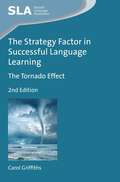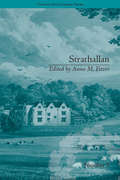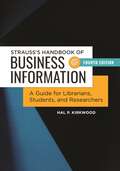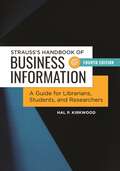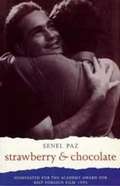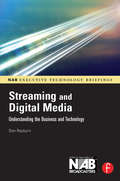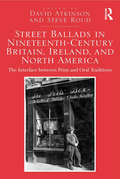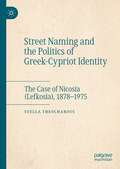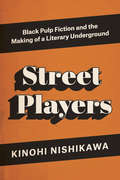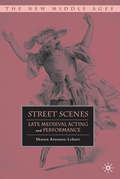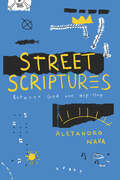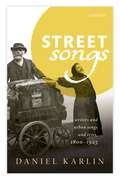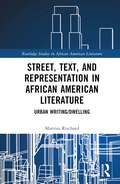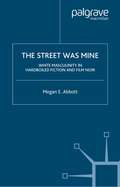- Table View
- List View
The Strategy Factor In Successful Language Learning: The Tornado Effect (Second Language Acquisition #121 (PDF))
by Carol GriffithsThis book addresses fundamental questions regarding the relationships between successful language learning and strategy use and development, according to learner, situational or target variables. It considers strategy effectiveness from an individual point of view and discusses pedagogical issues, especially relating to teacher perceptions and training, classroom and learner factors, methodology and content. This new edition has been reworked and revised to include an extensive review, analysis and re-interpretation of the existing literature and an update on the theoretical debate surrounding language learning strategies. The research methodology section has been considerably extended and detailed explanations are now given for how to analyse data from research studies. Rather than focusing on strategies divorced from the 'real world' of the classroom, this book explores the issues from the teaching/learning point of view and will be of interest to students, teachers, trainee teachers, teacher educators and researchers alike.
Strathallan: by Alicia LeFanu (Chawton House Library: Women's Novels)
by Anna M FitzerA novel, which addresses central themes of adultery, obsession and inheritance. It follows the fortunes of Matilda Melbourne who displays virtue, delicacy and an unwavering commitment to the sometimes ruthless demands of parental authority.
Strathallan: by Alicia LeFanu (Chawton House Library: Women's Novels)
by Anna M FitzerA novel, which addresses central themes of adultery, obsession and inheritance. It follows the fortunes of Matilda Melbourne who displays virtue, delicacy and an unwavering commitment to the sometimes ruthless demands of parental authority.
Stratifizierte und segmentierte Öffentlichkeit (Mediensymposium)
by Kurt Imhof Roger Blum Heinz Bonfadelli Otfried JarrenGegen die selbstverschuldete Unmündigkeit einer zu stark auf funktionale Differenzierung beschränkte Sozialwissenschaft gilt es, die klassische Trias der Differenzierung mit Bezug auf die Leistungsfunktionen der politischen Öffentlichkeit in der Demokratie wieder zur Diskussion zu bringen: Dabei wird klar, dass die ökonomische Globalisierung, die politische Transnationalisierung und die Segmentierungen in den Zentrumsgesellschaften – neben der Ausdifferenzierung eines eigenlogischen Mediensystems seit dem Ende des Kalten Krieges – die Leistungsfunktionen der politischen Öffentlichkeit und damit die Demokratie beeinträchtigen.
Strauss's Handbook of Business Information: A Guide for Librarians, Students, and Researchers
by Hal P. KirkwoodThis new edition of Strauss's guide helps users to find current information for and about businesses of all kinds—both private and public, U.S.-based and international—related to finance, investment, industries, and entrepreneurship.Strauss's Handbook of Business Information is a resource for finding and understanding business information. It contains explanation and instruction on the key facets of business information and provides detailed descriptions of key resources within both broad and specific categories. It can be used as a guide to further understanding the what, how, and why of business information research.The changing arena of business information requires regular updating and awareness. This new edition has been thoroughly updated with three new chapters: Entrepreneurship, Competitive Intelligence, and Corporate Social Responsibility. Other additions of note include subsections on internet and mobile marketing and tax havens and related issues; coverage of new legislation (e.g., Dodd-Frank); and subsections on index funds, investment communities, regulatory bodies and laws, hedge funds, venture capital companies, assessing risks, robo-advisors, and more.The Handbook is for students, faculty, librarians, and information professionals looking to gain a broader and deeper understanding of business information. Anyone needing to gain quick exposure to business information needs and resources for solutions will benefit from the volume as well.
Strauss's Handbook of Business Information: A Guide for Librarians, Students, and Researchers
by Hal P. KirkwoodThis new edition of Strauss's guide helps users to find current information for and about businesses of all kinds—both private and public, U.S.-based and international—related to finance, investment, industries, and entrepreneurship.Strauss's Handbook of Business Information is a resource for finding and understanding business information. It contains explanation and instruction on the key facets of business information and provides detailed descriptions of key resources within both broad and specific categories. It can be used as a guide to further understanding the what, how, and why of business information research.The changing arena of business information requires regular updating and awareness. This new edition has been thoroughly updated with three new chapters: Entrepreneurship, Competitive Intelligence, and Corporate Social Responsibility. Other additions of note include subsections on internet and mobile marketing and tax havens and related issues; coverage of new legislation (e.g., Dodd-Frank); and subsections on index funds, investment communities, regulatory bodies and laws, hedge funds, venture capital companies, assessing risks, robo-advisors, and more.The Handbook is for students, faculty, librarians, and information professionals looking to gain a broader and deeper understanding of business information. Anyone needing to gain quick exposure to business information needs and resources for solutions will benefit from the volume as well.
Strawberry And Chocolate: Introduction, translations & interview by Peter Bush
by Senel Paz Peter Bush[Amazon] The central relationship between Diego, the gay Cuban intellectual, and David a young communist militant, is developed by writer Senel Paz from his prize-winning short story "The Wolf, the Woods and the New Man". Introduction, translations & interview by Peter Bush
Streaming and Digital Media: Understanding the Business and Technology
by Dan RayburnSteaming and Digital Media gives you a concise and direct analysis to understand a scalable, profitable venture, as well as the common and hidden pitfalls to avoid in your business. By focusing on both the business implications and technical differences between online video and traditional broadcast distribution, you will learn how to gain significant time-to-market and cost-saving advantages by effectively using streaming and digital media technologies. As part of the NAB Executive Technology Briefing series, the book is geared towards the manager or executive and no technical prerequisite is required. You can quickly learn the technical speak as well as the market and business implications.New In The Book: - Consumer generated content and portals- Distribution of full-length video content- New distribution outlets for delivering content (Sling, TiVO, IPTV)- Addition of Flash streaming technology and Podcasting- Up-to-date market research and data- New industry pricing data
Streaming and Digital Media: Understanding the Business and Technology (Nab Executive Technology Briefings Ser.)
by Dan RayburnSteaming and Digital Media gives you a concise and direct analysis to understand a scalable, profitable venture, as well as the common and hidden pitfalls to avoid in your business. By focusing on both the business implications and technical differences between online video and traditional broadcast distribution, you will learn how to gain significant time-to-market and cost-saving advantages by effectively using streaming and digital media technologies. As part of the NAB Executive Technology Briefing series, the book is geared towards the manager or executive and no technical prerequisite is required. You can quickly learn the technical speak as well as the market and business implications.New In The Book: - Consumer generated content and portals- Distribution of full-length video content- New distribution outlets for delivering content (Sling, TiVO, IPTV)- Addition of Flash streaming technology and Podcasting- Up-to-date market research and data- New industry pricing data
Street Ballads in Nineteenth-Century Britain, Ireland, and North America: The Interface between Print and Oral Traditions
by David Atkinson Steve RoudIn recent years, the assumption that traditional songs originated from a primarily oral tradition has been challenged by research into ’street literature’ - that is, the cheap printed broadsides and chapbooks that poured from the presses of jobbing printers from the late sixteenth century until the beginning of the twentieth. Not only are some traditional singers known to have learned songs from printed sources, but most of the songs were composed by professional writers and reached the populace in printed form. Street Ballads in Nineteenth-Century Britain, Ireland, and North America engages with the long-running debate over the origin of traditional songs by examining street literature’s interaction with, and influence on, oral traditions.
Street Ballads in Nineteenth-Century Britain, Ireland, and North America: The Interface between Print and Oral Traditions
by David Atkinson Steve RoudIn recent years, the assumption that traditional songs originated from a primarily oral tradition has been challenged by research into ’street literature’ - that is, the cheap printed broadsides and chapbooks that poured from the presses of jobbing printers from the late sixteenth century until the beginning of the twentieth. Not only are some traditional singers known to have learned songs from printed sources, but most of the songs were composed by professional writers and reached the populace in printed form. Street Ballads in Nineteenth-Century Britain, Ireland, and North America engages with the long-running debate over the origin of traditional songs by examining street literature’s interaction with, and influence on, oral traditions.
Street Naming and the Politics of Greek-Cypriot Identity: The Case of Nicosia (Lefkosia), 1878–1975
by Stella TheocharousThis book is the first to explore street names and street-naming in the formation of a Greek-Cypriot identity in the cityscape of Nicosia between 1878 and 1975. Rather than treating toponymy as a direct linguistic act of spatial orientation, the book approaches street-naming as a contested practice involving those shared symbols and representations used to depict official history and collective identity as part of a political process. It considers how street names are part of the symbolic politics of space, and how authorities transformed the streets of Nicosia into arenas of struggle for the control of symbolic and material space. It documents historical efforts over the course of a century to impose a ‘geography of forgetting’ to buttress national identity and to cast out the ‘other’ from space — both literally and symbolically — so as to achieve territorial dominance and political legitimacy. The book is another step towards the development of a global perspective on the critical study of street-naming, thereby refining and expanding our knowledge of the political dynamics involved in the process. In their commemorative capacity, street names belong to the politics of public memory and identity.
Street Players: Black Pulp Fiction and the Making of a Literary Underground
by Kinohi NishikawaThe uncontested center of the black pulp fiction universe for more than four decades was the Los Angeles publisher Holloway House. From the late 1960s until it closed in 2008, Holloway House specialized in cheap paperbacks with page-turning narratives featuring black protagonists in crime stories, conspiracy thrillers, prison novels, and Westerns. From Iceberg Slim’s Pimp to Donald Goines’s Never Die Alone, the thread that tied all of these books together—and made them distinct from the majority of American pulp—was an unfailing veneration of black masculinity. Zeroing in on Holloway House, Street Players explores how this world of black pulp fiction was produced, received, and recreated over time and across different communities of readers. Kinohi Nishikawa contends that black pulp fiction was built on white readers’ fears of the feminization of society—and the appeal of black masculinity as a way to counter it. In essence, it was the original form of blaxploitation: a strategy of mass-marketing race to suit the reactionary fantasies of a white audience. But while chauvinism and misogyny remained troubling yet constitutive aspects of this literature, from 1973 onward, Holloway House moved away from publishing sleaze for a white audience to publishing solely for black readers. The standard account of this literary phenomenon is based almost entirely on where this literature ended up: in the hands of black, male, working-class readers. When it closed, Holloway House was synonymous with genre fiction written by black authors for black readers—a field of cultural production that Nishikawa terms the black literary underground. But as Street Players demonstrates, this cultural authenticity had to be created, promoted, and in some cases made up, and there is a story of exploitation at the heart of black pulp fiction’s origins that cannot be ignored.
Street Players: Black Pulp Fiction and the Making of a Literary Underground
by Kinohi NishikawaThe uncontested center of the black pulp fiction universe for more than four decades was the Los Angeles publisher Holloway House. From the late 1960s until it closed in 2008, Holloway House specialized in cheap paperbacks with page-turning narratives featuring black protagonists in crime stories, conspiracy thrillers, prison novels, and Westerns. From Iceberg Slim’s Pimp to Donald Goines’s Never Die Alone, the thread that tied all of these books together—and made them distinct from the majority of American pulp—was an unfailing veneration of black masculinity. Zeroing in on Holloway House, Street Players explores how this world of black pulp fiction was produced, received, and recreated over time and across different communities of readers. Kinohi Nishikawa contends that black pulp fiction was built on white readers’ fears of the feminization of society—and the appeal of black masculinity as a way to counter it. In essence, it was the original form of blaxploitation: a strategy of mass-marketing race to suit the reactionary fantasies of a white audience. But while chauvinism and misogyny remained troubling yet constitutive aspects of this literature, from 1973 onward, Holloway House moved away from publishing sleaze for a white audience to publishing solely for black readers. The standard account of this literary phenomenon is based almost entirely on where this literature ended up: in the hands of black, male, working-class readers. When it closed, Holloway House was synonymous with genre fiction written by black authors for black readers—a field of cultural production that Nishikawa terms the black literary underground. But as Street Players demonstrates, this cultural authenticity had to be created, promoted, and in some cases made up, and there is a story of exploitation at the heart of black pulp fiction’s origins that cannot be ignored.
Street Players: Black Pulp Fiction and the Making of a Literary Underground
by Kinohi NishikawaThe uncontested center of the black pulp fiction universe for more than four decades was the Los Angeles publisher Holloway House. From the late 1960s until it closed in 2008, Holloway House specialized in cheap paperbacks with page-turning narratives featuring black protagonists in crime stories, conspiracy thrillers, prison novels, and Westerns. From Iceberg Slim’s Pimp to Donald Goines’s Never Die Alone, the thread that tied all of these books together—and made them distinct from the majority of American pulp—was an unfailing veneration of black masculinity. Zeroing in on Holloway House, Street Players explores how this world of black pulp fiction was produced, received, and recreated over time and across different communities of readers. Kinohi Nishikawa contends that black pulp fiction was built on white readers’ fears of the feminization of society—and the appeal of black masculinity as a way to counter it. In essence, it was the original form of blaxploitation: a strategy of mass-marketing race to suit the reactionary fantasies of a white audience. But while chauvinism and misogyny remained troubling yet constitutive aspects of this literature, from 1973 onward, Holloway House moved away from publishing sleaze for a white audience to publishing solely for black readers. The standard account of this literary phenomenon is based almost entirely on where this literature ended up: in the hands of black, male, working-class readers. When it closed, Holloway House was synonymous with genre fiction written by black authors for black readers—a field of cultural production that Nishikawa terms the black literary underground. But as Street Players demonstrates, this cultural authenticity had to be created, promoted, and in some cases made up, and there is a story of exploitation at the heart of black pulp fiction’s origins that cannot be ignored.
Street Players: Black Pulp Fiction and the Making of a Literary Underground
by Kinohi NishikawaThe uncontested center of the black pulp fiction universe for more than four decades was the Los Angeles publisher Holloway House. From the late 1960s until it closed in 2008, Holloway House specialized in cheap paperbacks with page-turning narratives featuring black protagonists in crime stories, conspiracy thrillers, prison novels, and Westerns. From Iceberg Slim’s Pimp to Donald Goines’s Never Die Alone, the thread that tied all of these books together—and made them distinct from the majority of American pulp—was an unfailing veneration of black masculinity. Zeroing in on Holloway House, Street Players explores how this world of black pulp fiction was produced, received, and recreated over time and across different communities of readers. Kinohi Nishikawa contends that black pulp fiction was built on white readers’ fears of the feminization of society—and the appeal of black masculinity as a way to counter it. In essence, it was the original form of blaxploitation: a strategy of mass-marketing race to suit the reactionary fantasies of a white audience. But while chauvinism and misogyny remained troubling yet constitutive aspects of this literature, from 1973 onward, Holloway House moved away from publishing sleaze for a white audience to publishing solely for black readers. The standard account of this literary phenomenon is based almost entirely on where this literature ended up: in the hands of black, male, working-class readers. When it closed, Holloway House was synonymous with genre fiction written by black authors for black readers—a field of cultural production that Nishikawa terms the black literary underground. But as Street Players demonstrates, this cultural authenticity had to be created, promoted, and in some cases made up, and there is a story of exploitation at the heart of black pulp fiction’s origins that cannot be ignored.
Street Players: Black Pulp Fiction and the Making of a Literary Underground
by Kinohi NishikawaThe uncontested center of the black pulp fiction universe for more than four decades was the Los Angeles publisher Holloway House. From the late 1960s until it closed in 2008, Holloway House specialized in cheap paperbacks with page-turning narratives featuring black protagonists in crime stories, conspiracy thrillers, prison novels, and Westerns. From Iceberg Slim’s Pimp to Donald Goines’s Never Die Alone, the thread that tied all of these books together—and made them distinct from the majority of American pulp—was an unfailing veneration of black masculinity. Zeroing in on Holloway House, Street Players explores how this world of black pulp fiction was produced, received, and recreated over time and across different communities of readers. Kinohi Nishikawa contends that black pulp fiction was built on white readers’ fears of the feminization of society—and the appeal of black masculinity as a way to counter it. In essence, it was the original form of blaxploitation: a strategy of mass-marketing race to suit the reactionary fantasies of a white audience. But while chauvinism and misogyny remained troubling yet constitutive aspects of this literature, from 1973 onward, Holloway House moved away from publishing sleaze for a white audience to publishing solely for black readers. The standard account of this literary phenomenon is based almost entirely on where this literature ended up: in the hands of black, male, working-class readers. When it closed, Holloway House was synonymous with genre fiction written by black authors for black readers—a field of cultural production that Nishikawa terms the black literary underground. But as Street Players demonstrates, this cultural authenticity had to be created, promoted, and in some cases made up, and there is a story of exploitation at the heart of black pulp fiction’s origins that cannot be ignored.
Street Players: Black Pulp Fiction and the Making of a Literary Underground
by Kinohi NishikawaThe uncontested center of the black pulp fiction universe for more than four decades was the Los Angeles publisher Holloway House. From the late 1960s until it closed in 2008, Holloway House specialized in cheap paperbacks with page-turning narratives featuring black protagonists in crime stories, conspiracy thrillers, prison novels, and Westerns. From Iceberg Slim’s Pimp to Donald Goines’s Never Die Alone, the thread that tied all of these books together—and made them distinct from the majority of American pulp—was an unfailing veneration of black masculinity. Zeroing in on Holloway House, Street Players explores how this world of black pulp fiction was produced, received, and recreated over time and across different communities of readers. Kinohi Nishikawa contends that black pulp fiction was built on white readers’ fears of the feminization of society—and the appeal of black masculinity as a way to counter it. In essence, it was the original form of blaxploitation: a strategy of mass-marketing race to suit the reactionary fantasies of a white audience. But while chauvinism and misogyny remained troubling yet constitutive aspects of this literature, from 1973 onward, Holloway House moved away from publishing sleaze for a white audience to publishing solely for black readers. The standard account of this literary phenomenon is based almost entirely on where this literature ended up: in the hands of black, male, working-class readers. When it closed, Holloway House was synonymous with genre fiction written by black authors for black readers—a field of cultural production that Nishikawa terms the black literary underground. But as Street Players demonstrates, this cultural authenticity had to be created, promoted, and in some cases made up, and there is a story of exploitation at the heart of black pulp fiction’s origins that cannot be ignored.
Street Scenes: Late Medieval Acting and Performance (The New Middle Ages)
by S. Aronson-LehaviStreet Scenes offers a theory of late medieval acting and performance through a fresh and original reading of the Tretise of Miraclis Pleyinge. The performance theory perspective employed here, along with the examination of actor/character dialectics, paves the way to understanding both religious theatre and the complexity of late medieval theatricalities. Sharon Aronson-Lehavi demonstrates the existence of a late medieval discourse about the double appeal of theatre performance: an artistic medium enacting sacred history while simultaneously referring to the present lives of its creators and spectators.
Street Scriptures: Between God and Hip-Hop
by Alejandro NavaThis book explores an important aspect of hip-hop that is rarely considered: its deep entanglement with spiritual life. The world of hip-hop is saturated with religion, but rarely is that element given serious consideration. In Street Scriptures, Alejandro Nava focuses our attention on this aspect of the music and culture in a fresh way, combining his profound love of hip-hop, his passion for racial and social justice, and his deep theological knowledge. Street Scriptures offers a refreshingly earnest and beautifully written journey through hip-hop’s deep entanglement with the sacred. Nava reveals a largely unheard religious heartbeat in hip-hop, exploring crosscurrents of the sacred and profane in rap, reggaeton, and Latinx hip-hop today. Ranging from Kendrick Lamar, Chance the Rapper, Lauryn Hill, Cardi B, and Bad Bunny to St. Augustine and William James, Nava examines the ethical-political, mystical-prophetic, and theological qualities in hip-hop, probing the pure sonic and aesthetic signatures of music, while also diving deep into the voices that invoke the spirit of protest. The result is nothing short of a new liberation theology for our time, what Nava calls a “street theology.”
Street Songs: Writers and urban songs and cries, 1800-1925 (Clarendon Lectures in English)
by Daniel KarlinThis book, based on the Clarendon Lectures for 2016, is about the use made by poets and novelists of street songs and cries. Karlin begins with the London street-vendor's cry of 'Cherry-ripe!', as it occurs in poems from the sixteenth to the twentieth century: the 'Cries of London' (and Paris) exemplify the fascination of this urban art to writers of every period. Focusing on nineteenth and early twentieth century writers, the book traces the theme in works by William Wordsworth, Elizabeth Barrett Browning, Robert Browning, Walt Whitman, George Gissing, James Joyce, Virginia Woolf, and Marcel Proust. As well as street-cries, these writers incorporate ballads, folk songs, religious and political songs, and songs of their own invention into crucial scenes, and the singers themselves range from a one-legged beggar in Dublin to a famous painter in fifteenth-century Florence. The book concludes with the beautiful and unlikely 'song' of a knife-grinder's wheel. Throughout the book Karlin emphasizes the rich complexity of his subject. The street singer may be figured as an urban Orpheus, enchanting the crowd and possessed of magical powers of healing and redemption; but the barbaric din of the modern city is never far away, and the poet who identifies with Orpheus may also dread his fate. And the fugitive, transient nature of song offers writers a challenge to their more structured art. Overheard in fragments, teasing, ungraspable, the street song may be 'captured' by a literary work but is never, finally, tamed.
Street Songs: Writers and urban songs and cries, 1800-1925 (Clarendon Lectures in English)
by Daniel KarlinThis book, based on the Clarendon Lectures for 2016, is about the use made by poets and novelists of street songs and cries. Karlin begins with the London street-vendor's cry of 'Cherry-ripe!', as it occurs in poems from the sixteenth to the twentieth century: the 'Cries of London' (and Paris) exemplify the fascination of this urban art to writers of every period. Focusing on nineteenth and early twentieth century writers, the book traces the theme in works by William Wordsworth, Elizabeth Barrett Browning, Robert Browning, Walt Whitman, George Gissing, James Joyce, Virginia Woolf, and Marcel Proust. As well as street-cries, these writers incorporate ballads, folk songs, religious and political songs, and songs of their own invention into crucial scenes, and the singers themselves range from a one-legged beggar in Dublin to a famous painter in fifteenth-century Florence. The book concludes with the beautiful and unlikely 'song' of a knife-grinder's wheel. Throughout the book Karlin emphasizes the rich complexity of his subject. The street singer may be figured as an urban Orpheus, enchanting the crowd and possessed of magical powers of healing and redemption; but the barbaric din of the modern city is never far away, and the poet who identifies with Orpheus may also dread his fate. And the fugitive, transient nature of song offers writers a challenge to their more structured art. Overheard in fragments, teasing, ungraspable, the street song may be 'captured' by a literary work but is never, finally, tamed.
Street, Text, and Representation in African American Literature: Urban Writing/Dwelling (Routledge Studies in African American Literature)
by Mattius RischardComprehensive and comparative, this volume investigates African American street novelists since the Chicago Black Renaissance and the semiotic strategies they employ in publication, consumption, and depiction of street life. Divided into three chapters, this text analyzes the content, style, and ethics of “street” narrative through a discursive/rhetorical lens, exploring the development of street literature’s formal and contextual concerns to resolve the sociocultural and political questions surrounding cultural work. The book also gives emphasis to “text” or (post)structural literary analysis by answering questions about the genre’s aesthetic and linguistic techniques that respond to the injustices of urban planning. The last chapter, “Representation,” investigates the phenomenological hermeneutics of more recent street literature and its satire, highlighting the political stakes for authorship, credibility, and subjectivity. Through historical and contemporary studies of urban space, Blackness, and adaptations of street literature, this work attempts to network activists, artists, and scholars with the greater reading public by providing a functional ontology of reading the inner city.
Street, Text, and Representation in African American Literature: Urban Writing/Dwelling (Routledge Studies in African American Literature)
by Mattius RischardComprehensive and comparative, this volume investigates African American street novelists since the Chicago Black Renaissance and the semiotic strategies they employ in publication, consumption, and depiction of street life. Divided into three chapters, this text analyzes the content, style, and ethics of “street” narrative through a discursive/rhetorical lens, exploring the development of street literature’s formal and contextual concerns to resolve the sociocultural and political questions surrounding cultural work. The book also gives emphasis to “text” or (post)structural literary analysis by answering questions about the genre’s aesthetic and linguistic techniques that respond to the injustices of urban planning. The last chapter, “Representation,” investigates the phenomenological hermeneutics of more recent street literature and its satire, highlighting the political stakes for authorship, credibility, and subjectivity. Through historical and contemporary studies of urban space, Blackness, and adaptations of street literature, this work attempts to network activists, artists, and scholars with the greater reading public by providing a functional ontology of reading the inner city.
The Street Was Mine: White Masculinity in Hardboiled Fiction and Film Noir
by M. AbbottThis book considers a recurrent figure in American literature: the solitary white man moving through urban space. The descendent of Nineteenth-century frontier and western heroes, the figure re-emerges in 1930-50s America as the 'tough guy'. The Street Was Mine looks to the tough guy in the works of hardboiled novelists Raymond Chandler ( The Big Sleep ) and James M. Cain ( Double Indemnity ) and their popular film noir adaptations. Focusing on the way he negotiates racial and gender 'otherness', this study argues that the tough guy embodies the promise of an impervious white masculinity amidst the turmoil of the Depression through the beginnings of the Cold War, closing with an analysis of Chester Himes, whose Harlem crime novels ( For Love of Imabelle ) unleash a ferocious revisionary critique of the tough guy tradition.
